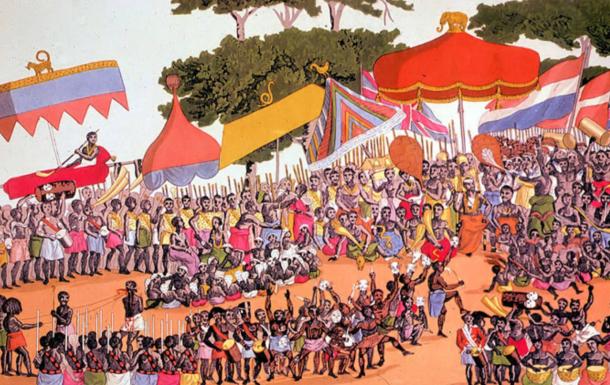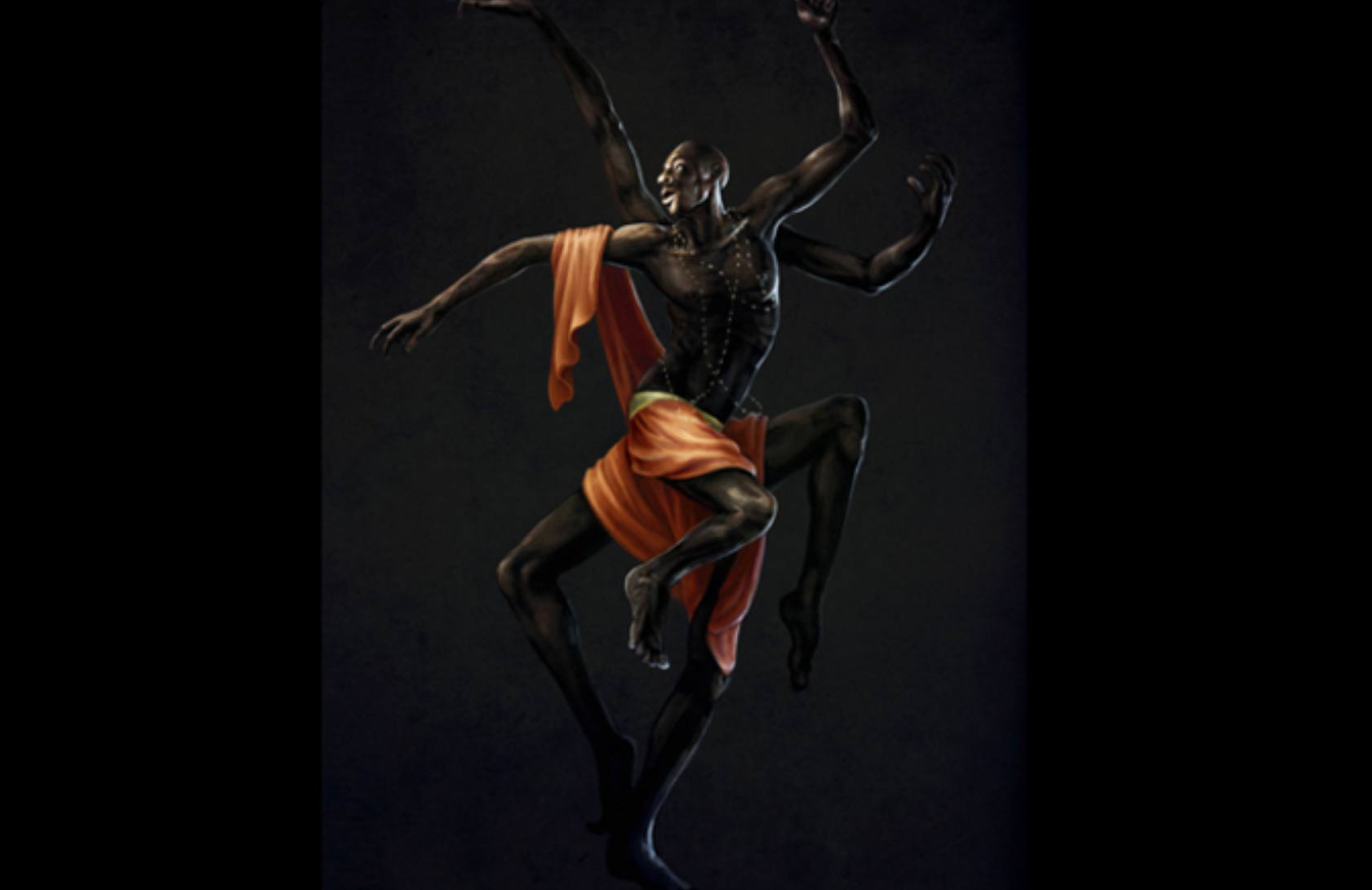Anansi – Deity or Storybook Trickster?
Most have probably heard of the Anansi tales from their childhood such as the one about how the pig got his snout. In this tale, in order for Anansi to get out of paying a debt to the pig, he dupes him into sticking his trunk into a bamboo stick and Anansi has to rescue him by cutting his trunk off. This act relieves Anansi of his debt to the pig and explains why the pig has a snout instead of a trunk like an elephant. Some may have even heard the tale of how the lion rewarded the mouse’s kindness. The mouse helps the lion get out of the trap set for him by poachers and once the lion is saved by the mouse, the lion wants to eat him. However, Anansi devises a trick to save the mouse. These and many other tales like them are attributed to this spider-like creature called Anansi who always seems to be involved in or making mischief somehow. But who is Anansi?
Origins with the Akan People of Ghana
In order to understand who Anansi is, it is important to first understand the ancient origins of this character. The word Anansi itself in Akan means spider. The Akan are the largest ethnic group in present-day Ghana. Among the subgroups of the Akan are the following: Asante, Akuapem, Akwamu, Akyem, Agona, Kwahu, Wassa, Fante, Anomabo, Abura, Gomua and Bono. These fables which star the spider as its star character originate with the Asante. Anansesem is the name given to the collection of spider tales.
- The Rich Mythology and Megalithic Culture of the Ancient Berbers, Lords of the Desert
- Squirrel! Fuzzy Messengers from the Ancient Underworld? The Little-Known Archetype in Mythology
- Museum Mix-up Creates a Sticky Mess: Spider Web Masks Did NOT Suffocate Widows

1817 depiction of an Ashanti Yam Ceremony. (Public Domain)
Most modern Akan people consider themselves Christian or Muslim; however, many of their ancestors used to subscribe to an indigenous religion devoted to the chief god, Nyame. Nyame translates as “Almighty” but Nyame is also known among the worshippers as Odomankoma “Infinite Inventor” and Anansi Kokuroku or “The Great Designer” or “The Great Spider.”

Anansi symbol. (Wiki Mitología)
Other lesser gods include Abosom, which are known as spirits who assist humans on earth, similar to what Yoruba people refer to as Orisha in the religion of Vodun. Also included among the deities is the Nsamanfo, which are considered the ancestors who have passed on to another realm; but like Abosom, they help humans in their daily lives. Among the Akan deities, Anansi became known as the deity that acted as an intercessor between Nyame and the Akan people. He also created the sun and the moon, showed people how to plant and grow food and pleaded with Nyame to provide Akan people with rain so that their crops could grow.
Anansi Immortalized Through Folklore
There is debate that still exists about whether Anansi the deity is the same as Anansi the spider spoken of in oral and written traditions. Some argue that the two are completely different. One thing that is certain is that Anansi is a part of West African mythology and as such he serves to amuse and entertain readers and listeners of his tales.
The deity known as Anansi is androgynous; however, the Anansi that appears is story is often shown as half man, half spider. He is a loveable spider but is depicted as a trickster. Anansi is usually trusted by other animals and they even consider him to be clever. However, he tends to trick them into doing things that end favorably for him - as is the case in the story of how the pig got his snout; or, favorably for others that he wishes to protect, as is the case of the fable about the mouse and the lion.
Finding His Way to the Americas
Although much of West African culture was destroyed or forgotten due to slavery and colonialism, the Anansi stories have managed to stay alive throughout many cultures, particularly in Jamaica and the rest of the Caribbean. Many West Africans from Akan tribes were brought to Jamaica and they preserved their indigenous religions through mixing it with Christianity and through the use of these spider stories.
- The gentle and benevolent Qilin of Chinese mythology
- World’s Rarest Textile is Made From the Silk of One Million Spiders
- The symbolic spider that wove its way through history
The Anansi tales – or Anancy as it is sometimes spelled in Jamaica – are folktales that are still passed down as oral traditions, such as the Jamaican tale about Anansi and the Tiger’s Soup. In this tale, Anansi encourages the tiger to go swimming with him and while the tiger is enjoying the swim, Anansi steals the tiger’s soup. To avoid blame, he makes Tiger believe that the monkeys in the jungle stole his soup.
As seen in this tale from Jamaica, Anansi tales have survived in the Americas, and as usual Anansi is still outwitting his opponents and covering his tracks to avoid being slain or eaten. It is believed that these stories continue to permeate the African culture and the culture of Africans throughout the Diaspora because Anansi has transformed from a god to a storybook symbol representing resistance from oppressive forces. Although it is uncertain whether Anansi the man spider is the same as the deity, he has and continues to remain a folk hero in African and African American cultures.

Anansi. (trowicia/Deviant Art)
Top Image: Anansi. Source: Mythology Wiki
By M. L. Childs
References
Anansi Brings Stories to the World. Myths and Legends. 2006.
Appiah, Peggy. Ananse The Spider: Tales from an Ashanti Village. New York: Pantheon Books, 1966.
Edit, Jack. Ashanti of Ghana: How Spider Obtained the Sky-God’s Stories. Wilderutopia [July, 2013] Retrieved on 8/15/2018.
Temple, Frances. Tiger Soup: An Anansi Story from Jamaica. Barton Press Inc. New York, 1994.
Vimeo. Anansi the Spider. 1972. Gerald Dermont films.



















